In order to begin to fully understand orbital cancer, it is important to understand the anatomy of the region. The orbit is the part of the face that houses the eye. It includes the eye socket and all of its parts, such as muscles, nerves, lymphatics, blood vessels, the structures that produce tears, and the eyelids. The brain is located just above and behind the orbit. The eye sits within the orbit, but is not technically a part of the orbit. Tumors that start in the eye itself will therefore not be covered here.
Orbital Bones
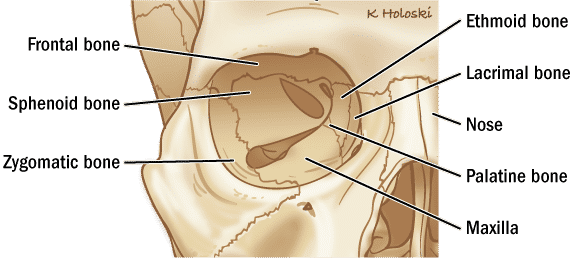
Bones of the Orbit
The orbit is formed by portions of 7 different bones.
- Frontal bone
- Sphenoid bone
- Zygomatic bone
- Ethmoid bone
- Lacrimal bone
- Palatine bone
- Maxilla
Lacrimal (Tearing) Structures
The lacrimal gland, located in the lateral upper corner of the orbit, is responsible for producing tears, which are important for keeping the eyeball moist and lubricated to prevent it from drying out. Every time a person blinks, tears coat the eyeball and drain into the lacrimal sac (located in the inner lower corner of the orbit). The tear duct (also called the nasolacrimal duct) then empties those tears into the nose. Cancers can start in the lacrimal gland, lacrimal sac, or even the nasolacrimal duct.
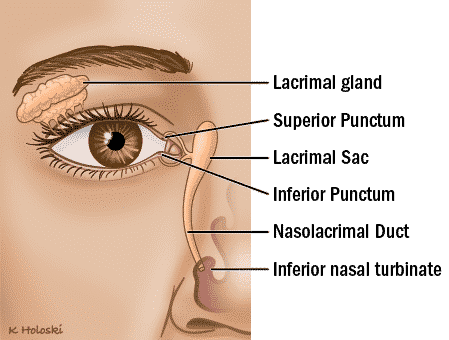
Extraocular Muscles
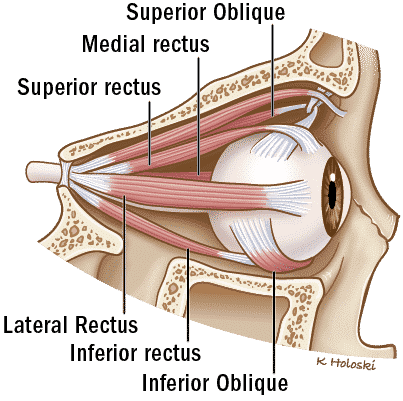
These 6 muscles control the movement of the eyeball. Each one is responsible for a slightly different direction of eyeball movement.
- Superior rectus
- Medial rectus
- Superior oblique
- Lateral rectus
- Inferior rectus
- Inferior oblique
Structure of the Eyelid
The eyelid is an interesting structure in that it is made up of skin, muscle, fibrous bands, a thin layer of conjunctiva, and eyelashes.
- Tarsus (Superior & Inferior)
Also called the tarsal plates, these are plates of connective tissue which provide structural support to the eyelids. - Palpebral Conjunctiva
This is the part of the conjunctiva (thin, clear mucus membrane) that lines the inside of the eyelids. The eyeball itself is also lined by the conjunctiva.
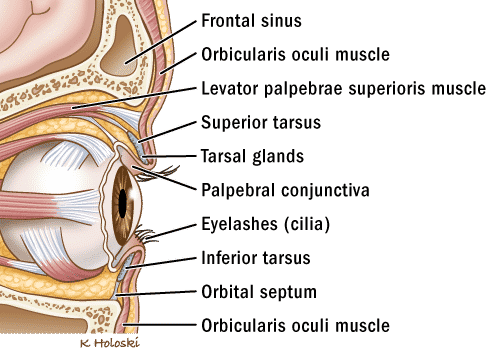
Additional Structures of the Eye
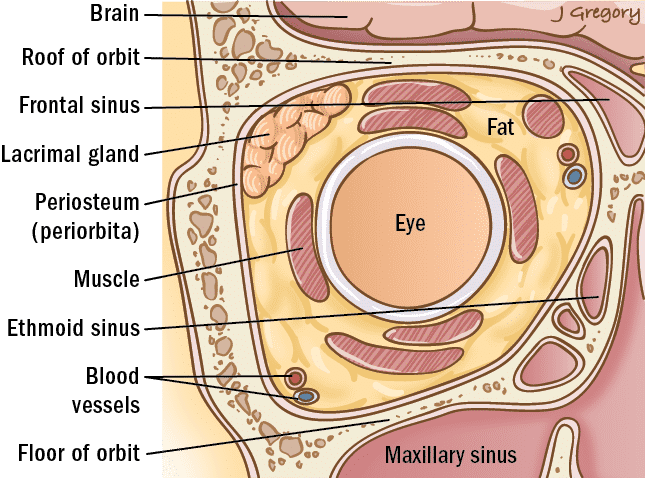
The orbit is also filled with fat, blood vessels, lymphatics and nerves. In addition, the bones of the orbit are lined with periosteum (also called the periorbita), a fibrous wall that encloses all of the fat and orbital components. The eye itself also sits within the orbit. Because of the variety of tissues and cell types within the orbit, cancers such as sarcomas (soft tissue cancers) and lymphomas, as well as benign tumors such as neurofibromas and hemangiomas, can all be found in the orbit.













